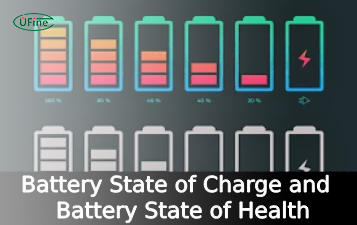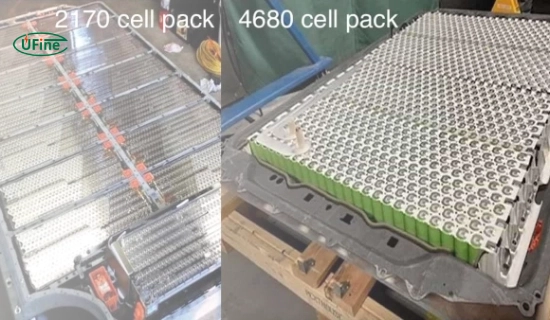
- Part 1. What is a Tesla battery pack made of?
- Part 2. Why does Tesla battery weight matter?
- Part 3. How much does a Tesla battery weight by model?
- Part 4. How big is a Tesla battery physically?
- Part 5. How does Tesla battery weight compare to a gas car?
- Part 6. What materials make Tesla batteries so heavy?
- Part 7. Does battery weight impact Tesla's performance?
- Part 8. Are Tesla battery packs getting lighter over time?
- Part 9. Can you replace a Tesla battery and how much does it weigh?
- Part 10. Environmental impact of heavy Tesla batteries
- Part 11. FAQs about Tesla battery weight
If you’re wondering how much a Tesla battery weighs, the quick answer is between 900 and 1,800 pounds (408 and 816 kilograms), depending on the model and battery pack size. These massive battery systems are crucial to powering Tesla’s electric vehicles, and their weight plays a big role in vehicle performance, range, and efficiency.
In this guide, we’ll explore everything you need to know about Tesla battery weight, from how much each model weighs to why it matters and how it compares to traditional car batteries.
Part 1. What is a Tesla battery pack made of?
Tesla battery packs comprise thousands of small lithium-ion cells grouped into modules, then arranged to form a complete battery pack. The most common cell format used is the 18650 or 2170 cylindrical cells, though Tesla is now introducing the 4680 cell for better performance.
Each battery pack includes:
- Battery modules
- Cooling systems
- Protective casing
- Battery management systems (BMS)
All of these components add to the overall weight of a Tesla battery.
Part 2. Why does Tesla battery weight matter?
The weight of a Tesla battery is essential for several reasons:
- Vehicle range: Heavier cars may consume more energy, reducing driving range.
- Performance: Battery weight affects acceleration, handling, and braking.
- Chassis design: Tesla’s chassis supports the battery as part of the car’s structure. This helps lower the center of gravity, improving stability.
So, while Tesla batteries are heavy, their weight is strategically used to enhance safety and performance.
Part 3. How much does a Tesla battery weight by model?
Let’s break it down by model:
Tesla Model 3
- Battery Weight: Around 1,060 pounds (480 kg)
- The Model 3 uses 2170 cells, and its battery pack ranges from 50 kWh to 82 kWh.
- The Long Range and Performance versions have heavier packs due to more cells.
Tesla Model Y
- Battery Weight: About 1,200 pounds (544 kg)
- The Model Y shares many parts with the Model 3, but its larger SUV body adds weight.
Tesla Model S
- Battery Weight: Around 1,200–1,300 pounds (544–590 kg)
- The Model S uses a 100 kWh battery, delivering long range but adding more mass.
Tesla Model X
- Battery Weight: Roughly 1,400 pounds (635 kg)
- The Model X is Tesla’s biggest SUV, requiring a large battery to maintain range.
Tesla Cybertruck (Estimated)
- Battery Weight: Expected to be over 1,800 pounds (816 kg)
- With its massive size and potential 200+ kWh pack, the Cybertruck’s battery will likely be the heaviest of all Teslas.
Part 4. How big is a Tesla battery physically?
Besides weight, Tesla battery packs are also quite large. For example:
- A Model S battery pack is about 6 feet long, 4 feet wide, and 6 inches thick.
- The 4680 cell format allows Tesla to make batteries denser, possibly reducing size without sacrificing range.
This large footprint helps Tesla place the battery under the vehicle’s floor, optimizing space and safety.
Part 5. How does Tesla battery weight compare to a gas car?
The average gas engine weighs around 300 to 500 pounds (136 to 227 kg), much less than a Tesla battery pack. However, Tesla vehicles don’t have:
- A traditional engine
- A transmission system
- An exhaust system
So, even though the battery is heavier, the total vehicle weight is comparable to a gas-powered car in the same class.
Part 6. What materials make Tesla batteries so heavy?
Tesla batteries are heavy because of the materials used, such as:
- Lithium: The main element in the battery cells
- Nickel, cobalt, and manganese: Used in the cathode
- Aluminum casing: Protects the battery
- Copper wiring: Conducts electricity
Each material is dense and heavy, mainly when used in large quantities.
Part 7. Does battery weight impact Tesla’s performance?
Yes, but not in a bad way.
Despite being heavy, Tesla vehicles are engineered to balance the weight smartly. Benefits include:
- Low center of gravity for better handling
- Even weight distribution across the car
- Improved traction in corners and bad weather
So while the battery adds weight, Tesla uses it to its advantage.
Part 8. Are Tesla battery packs getting lighter over time?
Yes. Tesla is constantly working on making batteries:
- More energy-dense
- Lighter
- Cheaper to produce
The introduction of the 4680 battery cells is a big step. These cells:
- Use fewer materials
- Offer more power
- Reduce overall battery weight
As Tesla improves its battery tech, future models will likely be lighter and more efficient.
Part 9. Can you replace a Tesla battery and how much does it weigh?
Yes, Tesla batteries can be replaced. If a battery is damaged or degraded, Tesla or a certified technician can install a new one.
- Replacement batteries weigh the same as the original.
- Battery swaps are rare, since Tesla batteries are designed to last 300,000 to 500,000 miles.
However, battery replacement is expensive, often costing $10,000 or more, depending on the model.
Part 10. Environmental impact of heavy Tesla batteries
Heavier batteries require more resources to produce, which can impact the environment. But Tesla offsets this by:
- Using renewable energy at Gigafactories
- Recycling old batteries
- Designing batteries that last longer
So while battery weight has an environmental cost, Tesla is working to minimize it.
Part 11. FAQs about Tesla battery weight
How much does a Tesla battery weight in kg?
Depending on the model, Tesla batteries weight between 408 kg to 816 kg.
Why are Tesla batteries so heavy?
They are heavy due to the materials used, including lithium, nickel, aluminum, and the protective casing.
Does battery weight affect Tesla range?
Yes, but Tesla designs vehicles to compensate for the battery weight with smart engineering and software.
Is a Tesla battery heavier than a gas engine?
A Tesla battery is typically 2 to 4 times heavier than a traditional gas engine.
Can Tesla reduce battery weight in the future?
Yes. With 4680 cells and new materials, Tesla aims to make batteries lighter and more efficient.
Related Tags:
More Articles

Battery State of Charge and Battery State of Health
Battery SoC vs. SoH explained: Learn professional methods to measure charge levels, test health status, and optimize battery performance for longer lifespan.
Difference Between 18650, 26650, and 21700 Batteries
What’s the difference between 18650, 21700, and 26650 batteries? Compare size, capacity, and performance to find the best lithium battery for your device.
LFP Battery Vs. LTO Battery: A Detailed Comparison
Compare LFP (LiFePO4) and LTO (Lithium Titanate) batteries by energy density, lifespan, safety, cost, and uses in EVs, solar storage, and backup power.
Compare 18650 battery types: Li-ion, LiFePO4, and LiPo. Key specs (voltage/capacity) and best uses for vapes, flashlights, EV batteries.
How to Distinguish Between Grade A, Grade B, and Grade C LiFePO4 cells?
Explore the differences between Grade A, B, and C LiFePO4 cells and learn how to choose the right one for electric vehicles, solar storage, or backup power.




